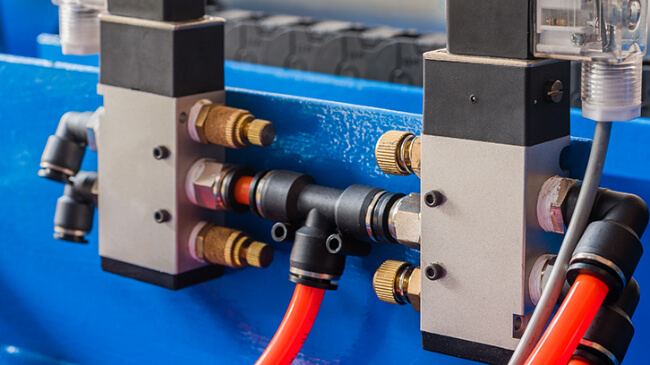As a mechanic or a do-it-yourself (DIY) enthusiast, one of the essential tools you should have in your toolbox is a torque wrench. A torque wrench is a tool that helps you tighten bolts and nuts to a specific torque level. This torque level is crucial in ensuring the safety and reliability of the equipment or machinery you are working on. In this article, I will discuss the purpose and applications of a torque wrench and how to master the art of precision with this tool.
Introduction to Torque Wrenches
A torque wrench is a specialized tool that helps you tighten bolts and nuts to a specific torque value. The torque value is the amount of force required to rotate an object around its axis. Torque is measured in units of pounds-feet (lb-ft) or Newton-meters (Nm). A torque wrench ensures that the bolts and nuts are tightened to the manufacturer’s recommended specifications, preventing over-tightening or under-tightening, which can lead to equipment failure.
Understanding How a Torque Wrench Works
A torque wrench works by applying a specific amount of force to a bolt or nut. The force is applied through a calibrated spring or a hydraulic system, which measures the amount of torque being applied. When the torque value is reached, the wrench clicks or vibrates, indicating that the desired torque level has been achieved. Different types of torque wrenches use different mechanisms to achieve this, but the principle remains the same.
Different Types of Torque Wrenches
There are different types of torque wrenches available in the market, each with its unique features and applications. The most common types of torque wrenches are:
Beam Torque Wrench
A beam torque wrench is the simplest and most affordable type of torque wrench. It uses a calibrated beam to measure the amount of torque being applied. The beam deflects as the torque is applied, indicating the amount of torque being applied. Beam torque wrenches are accurate but require a steady hand to read the scale.
Click Torque Wrench
A click torque wrench is the most popular type of torque wrench. It uses a calibrated spring and a clutch mechanism to measure the torque being applied. When the desired torque level is reached, the wrench clicks, indicating that the torque value has been achieved. Click torque wrenches are easy to use and provide accurate results.
Dial Torque Wrench
A dial torque wrench uses a calibrated dial to measure the amount of torque being applied. The dial rotates as the torque is applied, indicating the amount of torque being applied. Dial torque wrenches are accurate but require more maintenance than other types of torque wrenches.
Electronic Torque Wrench
An electronic torque wrench uses a digital display to measure the amount of torque being applied. Electronic torque wrenches are the most accurate type of torque wrenches, but they are also the most expensive. They require batteries and regular calibration to maintain their accuracy.
Benefits of Using a Torque Wrench
Using a torque wrench has several benefits, including:
Preventing Equipment Failure
Over-tightening or under-tightening bolts and nuts can lead to equipment failure. Using a torque wrench ensures that the bolts and nuts are tightened to the manufacturer’s recommended specifications, preventing equipment failure.
Improving Safety
Tightening bolts and nuts to the manufacturer’s recommended torque level improves safety. Over-tightened bolts and nuts can break, causing injury or property damage. Under-tightened bolts and nuts can loosen over time, leading to equipment failure and injury.
Ensuring Consistency
Using a torque wrench ensures that the same torque level is applied to all bolts and nuts, ensuring consistency in the assembly process. This consistency improves the reliability and safety of the equipment.
Factors to Consider When Choosing the Best Torque Wrench
When choosing the best torque wrench, several factors should be considered, including:
Torque Range
The torque range is the range of torque values that the torque wrench can measure. The torque range should be suitable for the applications you will be working on.
Accuracy
The accuracy of the torque wrench is crucial in ensuring that the bolts and nuts are tightened to the correct torque level. The accuracy should be within the manufacturer’s recommended specifications.
Durability
The torque wrench should be durable and able to withstand the rigors of regular use. The materials used to make the torque wrench should be high-quality and long-lasting.
Ease of Use
The torque wrench should be easy to use, with clear and easy-to-read markings. The mechanism used to measure torque should be easy to understand and operate.
How to Use a Torque Wrench Properly
Using a torque wrench properly requires following a few simple steps:
Step 1: Set the Torque Value
Set the torque value on the torque wrench to the manufacturer’s recommended specifications.
Step 2: Tighten the Bolt or Nut
Tighten the bolt or nut using the torque wrench until the wrench clicks or vibrates, indicating that the desired torque level has been achieved.
Step 3: Check the Torque Level
Check the torque level using a torque wrench to ensure that the desired torque level has been achieved. If the torque level is not within the manufacturer’s recommended specifications, adjust the torque wrench and repeat the process.
Common Mistakes When Using a Torque Wrench
Using a torque wrench improperly can lead to inaccurate results and equipment failure. Some common mistakes to avoid when using a torque wrench include:
Over-tightening or Under-tightening
Over-tightening or under-tightening bolts and nuts can lead to equipment failure. Using a torque wrench ensures that the bolts and nuts are tightened to the manufacturer’s recommended specifications.
Not Calibrating the Torque Wrench
Not calibrating the torque wrench regularly can lead to inaccurate results. Calibrate the torque wrench according to the manufacturer’s recommended schedule.
Using the Wrong Type of Torque Wrench
Using the wrong type of torque wrench for the application can lead to inaccurate results. Choose the right type of torque wrench for the application to ensure accurate results.
Maintenance and Care of Your Torque Wrench
Proper maintenance and care of your torque wrench can extend its lifespan and maintain its accuracy. Some maintenance tips include:
Regular Calibration
Calibrate the torque wrench regularly according to the manufacturer’s recommended schedule.
Lubrication
Lubricate the moving parts of the torque wrench regularly to ensure smooth operation.
Storage
Store the torque wrench in a dry and clean place to prevent corrosion and damage.
Conclusion
A torque wrench is an essential tool for any mechanic or DIY enthusiast. Understanding the purpose and applications of a torque wrench and how to use it properly can improve the safety and reliability of the equipment you are working on. When choosing a torque wrench, consider factors such as torque range, accuracy, durability, and ease of use. Avoid common mistakes when using a torque wrench and maintain it regularly to ensure accurate results. With proper use and care, a torque wrench can be a valuable and long-lasting addition to your toolbox.


